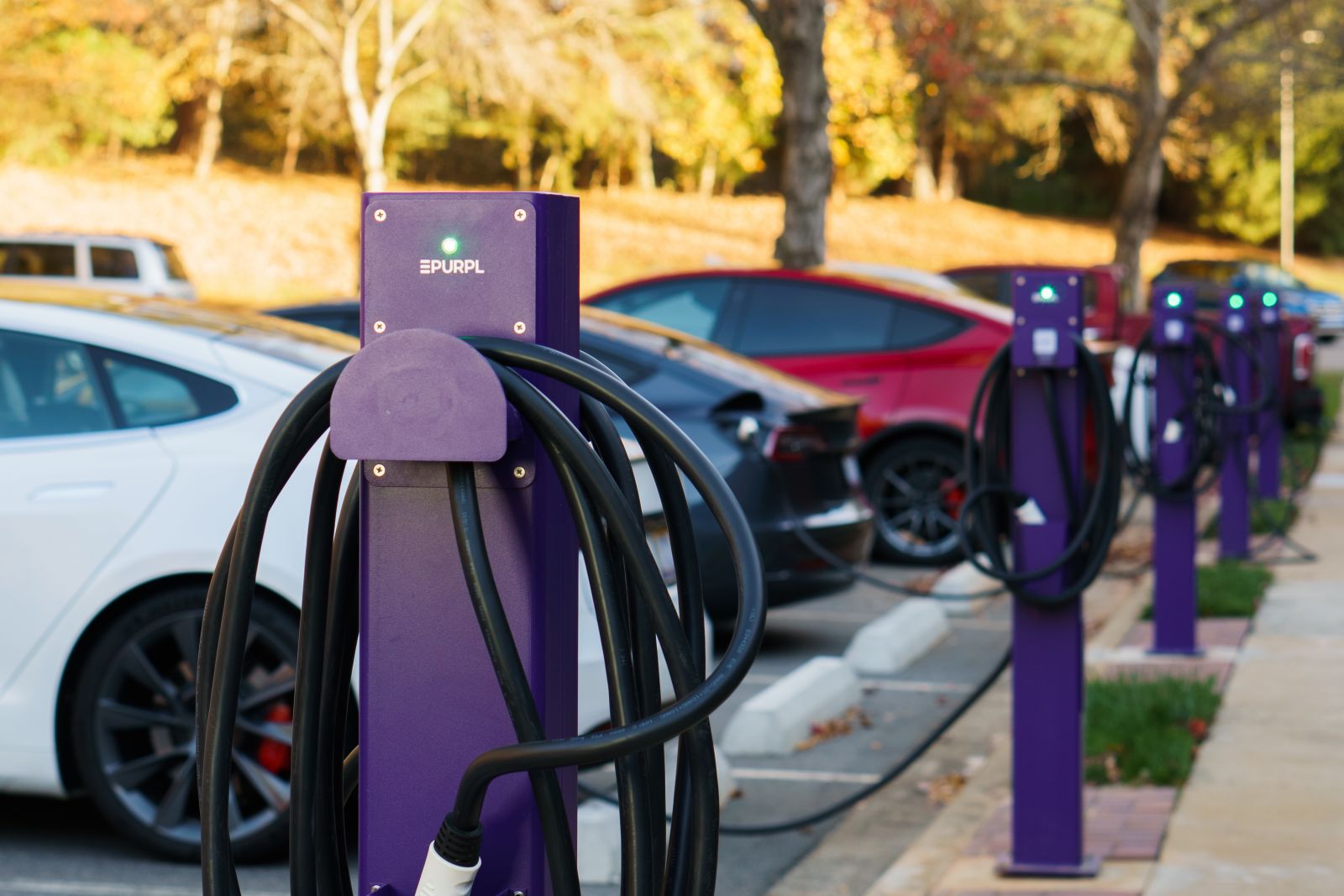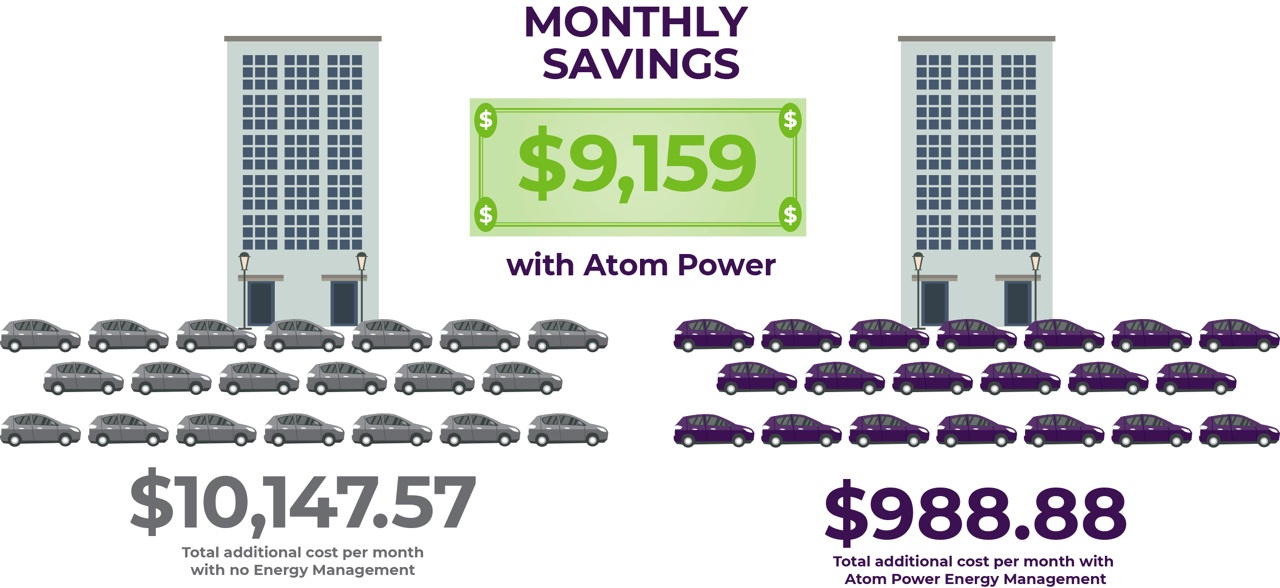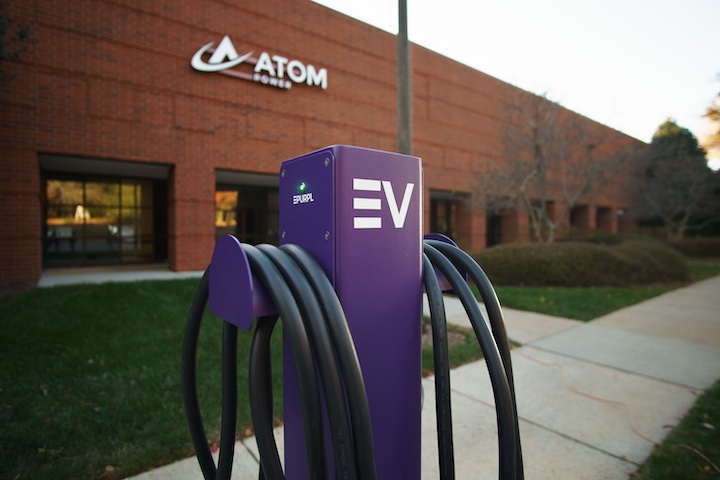Pairing Real-Time Energy Management with Electric Vehicle Charging Paves the Way for Cost Savings
The electrification of everything will play a central role in enabling the U.S. to achieve net-zero carbon emissions by 2050. Switching to electric vehicles (EV) contributes to this goal. However, rising EV adoption comes with a few challenges. One of the biggest challenges is larger energy demands, which can lead to higher utility bills. This article shows how pairing energy management with EV charging can be cost effective for multi-family building owners, commercial property owners, and fleet operators.
How EV Charging Affects Your Utility Bill
Residential utility bills are typically broken down in terms of energy consumption, or the amount of energy you use in kilowatt hours during a given billing period. It's straightforward as there is a 1:1 relationship between the price you pay each month and the amount of energy you consume. Utility bills for multi-family owners, commercial property owners, and fleet operators add another variable, energy demand. To an electric utility, demand represents the amount of power that needs to be generated at any given time during the day to cover the maximum amount of energy needed by its customers. The highest demand point over the course of a month is "peak demand." As demand increases, the utility must seek out additional energy sources and build new transmission and distribution capacity, which can be very expensive. In many markets, peak demand accounts for the single largest cost on utility bills.

Installing EV charging infrastructure adds a significant additional load to one's electric service, subsequently increasing demand. Now imagine the impact of adding multiple EV charging spaces to a multi-family residence and the effect it will have on peak demand and the utility bill.
EV Charging + Energy Management = Cost Savings
Adding energy management to EV charging can help control or reduce electricity costs on your utility bill. Many major EV charging station manufacturers include some form of energy management in their products, whether it's configurable time-of-day scheduling or adjustable fixed charging rate. However, what if you could manage energy consumption in real time, with the flexibility to ensure you stay below peak demand and avoid a service upgrade? Real-time energy management lets a user dynamically adjust and manage EV charging by regulating vehicle charge rate, time of day, length of time, and overall energy an EV can use throughout a given day. By monitoring consumption and evaluating historical baseline peak demand, this system can target EV charging rates and times where current month peak demand will not be exceeded. As a result, you can charge your vehicle during off-peak hours when electricity is cheaper and more available and avoid costly service upgrades that can come with increased demand.
Here's how energy management coupled with EV charging works for a multi-family property owner. Say a New York City property owner adds 20 EV charging stations to their apartment building's parking lot. Residents typically charge their vehicles after they come home from work, starting between 4 - 6pm. Assuming each EV charges for an average of 2 hours per day at 10kW, an additional 200kW is pulled from the utility grid. Without energy management, the building's demand will spike above the historical peak by up to 200kW, which will dramatically increase electricity costs. At a demand rate of $45.79 per kilowatt, the demand charge will increase by $9,158.69 per month. If the property owner uses real-time energy management with the EV charging system, the only increase on their utility bill would be the electricity used for charging. At a rate of $0.0824/kWh, the increase would be $988.88 per month for 20 vehicles ($49.44 per vehicle).

This scenario is just as applicable for fleet operators, with an added benefit: energy management can optimize their fleet operating costs.
Fleet operators often choose to electrify their fleets based on a return on investment (ROI) calculation that accounts for factors such as infrastructure, maintenance costs, and fuel consumption. Maintenance costs tend to be lower for EVs. They don't have combustion engines, transmissions, belts, or spark plugs. Brake wear and tear is reduced due to the use of regenerative braking. And you don't have to worry about maintenance tasks like oil changes. However, if a fleet operator doesn't manage their energy costs effectively (i.e., without energy management), their realized ROI could end up well below their calculated ROI. With energy management, fleet operators can control how quickly (charge rate) and when their vehicles charge and access information that indicates whether their vehicles are plugged in and charging when they need to be. By fueling up during off-peak hours and avoiding significant demand changes through an energy management system, fleet operators can meet or exceed their ROI, thus validating their decision to transition to an electric fleet.
Simplicity and scalability of EV charging infrastructure are of particular concern for property owners and fleet operators, so selecting the right technology is critical. Solutions that build real-time energy management capabilities directly into the electrical infrastructure, allowing users to dynamically manage their energy use at the circuit breaker, address both needs.
 Conclusion
Conclusion
The electrification of everything is coming, and the trend to mainstream transportation electrification is happening now. Vehicle manufacturers GM and VW have made commitments to phase out internal-combustion vehicles in favor of EVs. States like California and New York are implementing "charge ready" and "make ready" programs that offer property owners rebates and incentives to reduce the costs of installing EV charging infrastructure at their buildings. And major cities like Atlanta and Seattle have passed "make ready" policies that require EV charging infrastructure be incorporated into new construction.
Now more than ever, it's important to future proof investments in EV charging infrastructure as fleet operators, commercial and multi-family property owners, and municipalities plan for such infrastructure and as more EVs come online to replace conventional, gas-powered vehicles. Incorporating EV charging at the electrical infrastructure level, charging vehicles directly from the circuit breaker, not only future proofs your investment but allows for easy, efficient scalability. And combining real-time energy management with EV charging ensures lower operating costs, making the transition to EVs not only more accessible but affordable too.
Mike Majewski is Director of Product Marketing EVS at Atom Power. Designed and manufactured in North Carolina, the Atom Power suite of smart electrical products includes a digital circuit breaker, a customizable smart distribution panel, and a personalized software solution that enables complete control and customization of electrical infrastructure for commercial and industrial, electric vehicle, and residential applications.
Atom Power | www.atompower.com
Author: Mike Majewski









